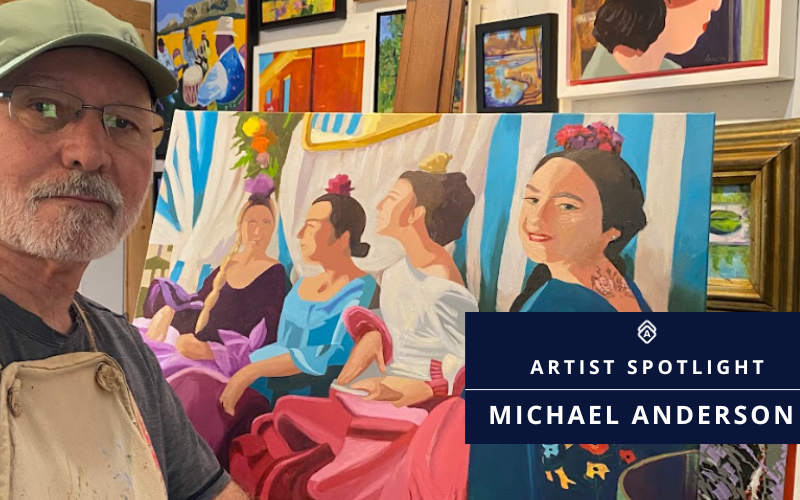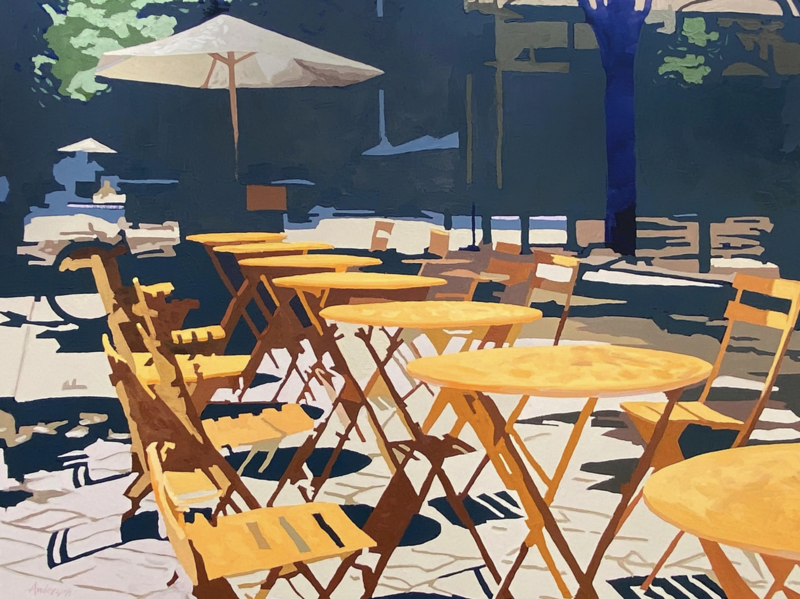"A professional art career should be viewed as a long arc—the key to success is to just keep creating."
Art, for Artwork Archive's Featured Artist Michael Anderson, is about sparking something profound—whether it’s the rekindling of a forgotten memory, a fresh perspective on the familiar, or simply a moment of joy and awe.
Based in Belleville, IL, Michael’s artistic journey spans decades, blending traditional mediums like oils and watercolors with digital art and architectural rendering.
Whether sketching outdoors with several sketchbooks in tow or painting luminous landscapes, Michael brings a unique depth to every piece, drawing inspiration from the interplay of light, color, and space.
Artwork Archive had the chance to chat with Michael Anderson about his creative process, the importance of color, and how Artwork Archive helps him manage his art career.
You can see more of his work on Discovery and learn more about his art practice below:
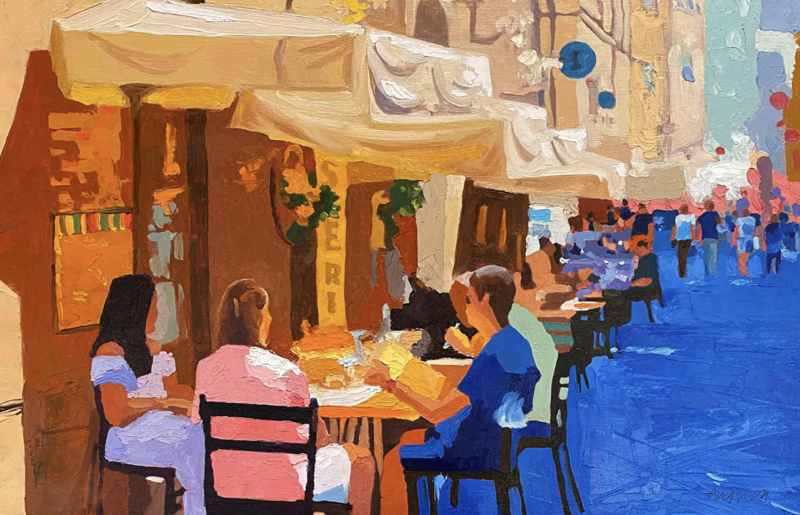
Michael Anderson, 'Shall We Have Lunch', 11 x 17 x 1.5 in
Laying the Foundation Before the First Brushstroke
Before color even touches the canvas, Michael Anderson is looking for structure. Whether he’s working from a photo or painting outdoors, he studies the light and shadow, sketching an outline of shapes in pencil to set the stage.
"The best part of a painting is reaching that moment when I begin to feel happy with my effort," the artist explains. "It might not be what I was originally going for, but I try to be open to what the paint can do on its own."
That openness is what keeps each piece interesting—what starts as a plan often turns into something unexpected.
Why Color Is an Ongoing Experiment
For a long time, Michael worked with more subdued, earth-toned palettes. Then he made a change. He put those muddy colors aside and started embracing bolder, modern hues.
"There is pleasure in simply putting one color next to another," he says.
Lately, his focus has shifted again—he’s bringing in muted color mixtures, refining his understanding of chroma, temperature, and the relationships between colors.
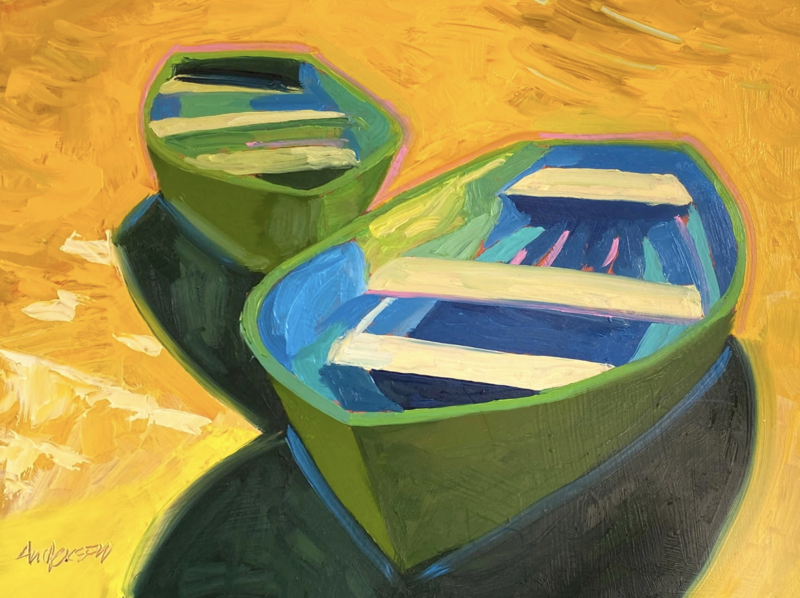
Michael Anderson, Boats, 12 x 16 x 0.125 in
How an Old Bike or a Rowboat Can Tell a Bigger Story
Look closely at Michael Anderson’s work, and you’ll often find certain objects—rowboats, vintage bicycles, old lawn chairs—elements that might seem like random details.
But, these objects are there for a reason—intentionally designed to spark something deeper.
"Those things do evoke happy memories, but they can also be seen as metaphors that have deeper meanings—like the passage of time or life’s journeys," the visual artist explains. "It is one of the powers of painting."
For some, these objects bring back personal memories. For others, they become symbols of movement, change, and the moments we leave behind.
Why Doubt (and Even Failure) Aren't the End of the Road
Like every artist, Michael has experienced doubt. It’s inevitable. But over time, he’s realized that hesitation and even failure aren’t signs to stop—they’re part of the process for every artist.
"A professional career should be viewed as a long arc. The key to success is to just keep creating," he says.
It’s easy to get caught up in short-term struggles, but the bigger picture matters more. The only way forward is to keep working.
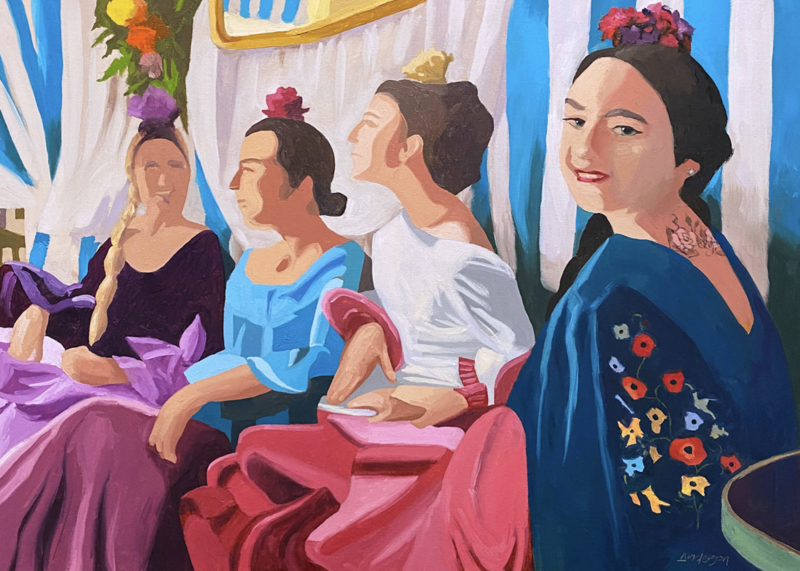
Michael Anderson, Girl With a Rose Tattoo, 20 x 28 x 1 in
Michael's Advice for Other Artists? Step Back
Michael has a habit that's made a huge difference in how he paints: stepping back. Literally.
"I have learned to step back from my canvas from time to time while painting to look at my work in progress with 'fresh' eyes," the painter says. "Mistakes, as well as successes, in a painting are more obvious from fifteen steps back. The same is true for my artistic practice."
Applying that same mindset to his art career, Michael uses Artwork Archive to "step back":
Artwork Archive lets Michael take in the full picture of his inventory and make informed decisions about where his work is headed.
"For me Artwork Archive creates a bigger picture of my inventory—somthing I've found to be a critical element in managing my art career."
The Moment He Realized He Needed a Better System
There comes a point in every artist’s career when things start getting… messy.
For Michael Anderson, that moment hit hard when he was trying to organize a proposal for a solo show. "I had stored my records in 3-ring binders and makeshift catalogs. It was a clunky process that really didn’t suit my growing inventory," the artist recalls.
"Artwork Archive easily met my expanding professional needs and is now an essential tool in my artistic practice." What once felt like an impossible task became manageable. Now, everything is in one place, and Michael is able to stay on top of his growing career without the stress.
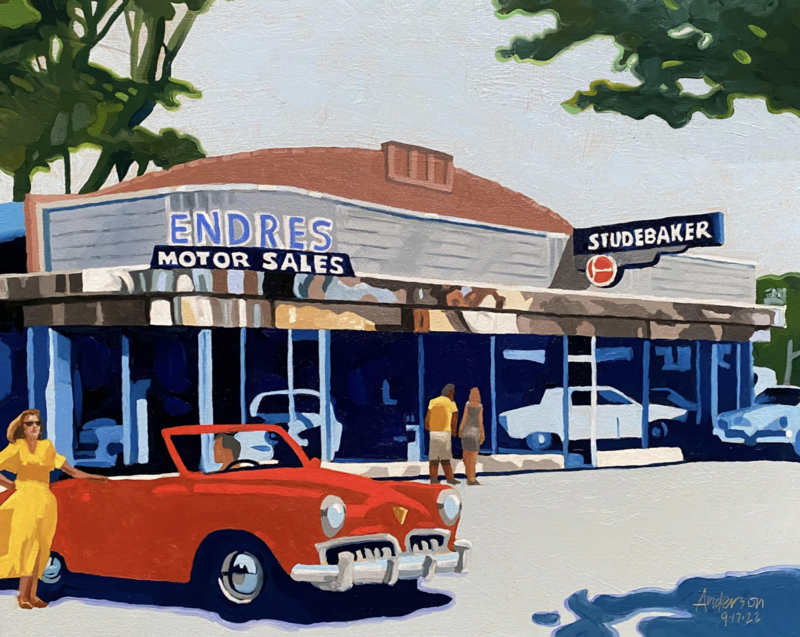
Michael Anderson, Mid-century Auto Dealership, 16 x 20 x 0.75 in
The Feature That Saves Time (and Gets More Sales)
When preparing for a recent solo exhibition, a gallery director asked Michael to provide wall labels for thirty paintings. A daunting task—but with Artwork Archive, it turned into a quick, streamlined process.
"Creating Artwork Labels using Artwork Archive made easy work of that task," he says. "Each label was printed with its title, dimensions, price, and a QR code that led viewers directly to a digital view of the painting—including my statement about the work. I received several purchase requests directly in my Artwork Archive inbox as a result."
Having his work organized didn’t just make the exhibition process easier—it directly led to sales.
Wall labels aren’t the only way to use QR codes for your art:
Some artists create QR Code Labels to adhere to the back of their artwork for internal inventory management, while others generate QR Code Labels for exhibition display. No matter the case, Artwork Archive provides versatile options to fit your needs. Learn all the ways you can use QR codes on Artwork Archive.
What Every Emerging Artist Needs to Hear
If there's one thing Michael Anderson has learned as a professional artist, it's that making art is only part of the equation. Artists also have to show up, be intentional with their business, and foster the right connections.
"Making investments in elevating your work will pay dividends," he says. "Most importantly, maintain and cultivate relationships with your patrons, collectors, and curators. They become the champions of your art career."
Your art deserves to be seen and valued. The way you present it and the relationships you build will help open doors and create opportunities.
First impressions matter—make sure your portfolio is working for you:
When someone asks to see your work, be ready with a polished portfolio.
Instead of scrambling to put together PDFs or email attachments, use Artwork Archive’s Private Rooms and Portfolio Pages to create sleek, curated presentations of your artwork. Having clear documentation and a professional presentation shows you’re organized and serious about your career—something that goes a long way in the art world.
Michael Anderson, Bistro Tables, 30 x 40 x 0.75 in
Michael Anderson uses Artwork Archive to get a bigger picture of his art business, create QR code wall labels, present himself professionally, and a lot more.
You can make an online portfolio, catalog your artwork, and generate reports like inventory reports, tear sheets, and invoices in seconds with Artwork Archive. Take a look at Artwork Archive's free trial and start growing your art business.
